OCZ Vertex 3 Pro Preview: The First SF-2500 SSD
by Anand Lal Shimpi on February 17, 2011 3:01 AM ESTAnandTech Storage Bench 2011 - Light Workload
Lighter use cases still show a benefit from the SF-2500, but again we see that a 6Gbps interface is necessary to really distance this drive from the pack:
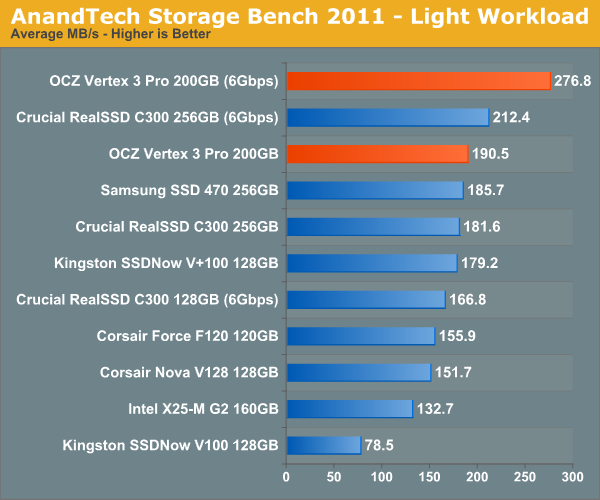
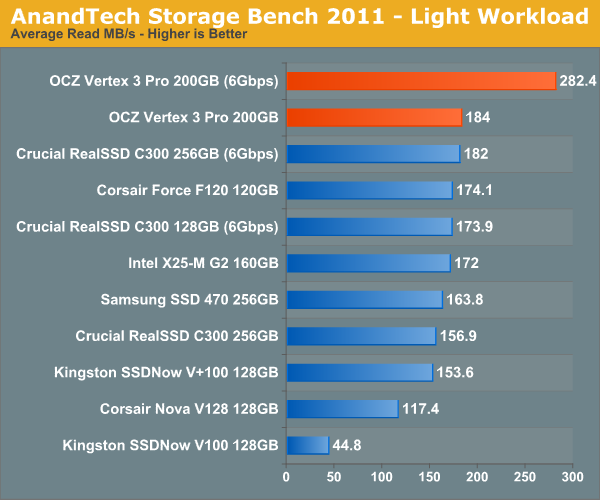
Read performance continues to be a tremendous advantage of the SF-2500. Again, 6Gbps matters a lot here.
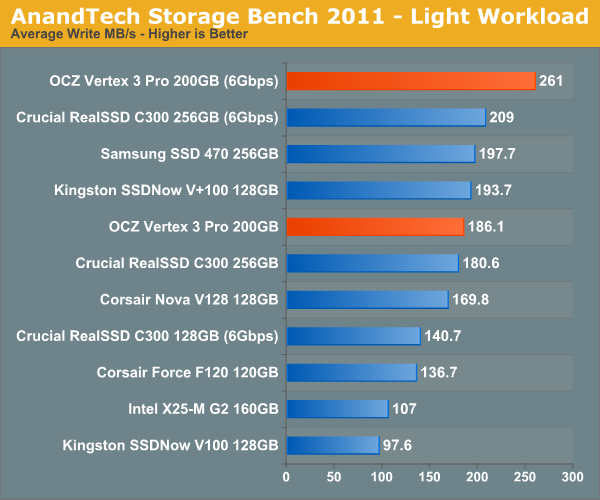
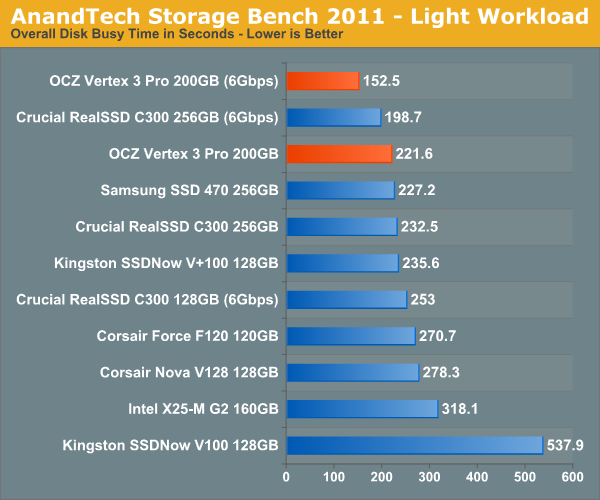
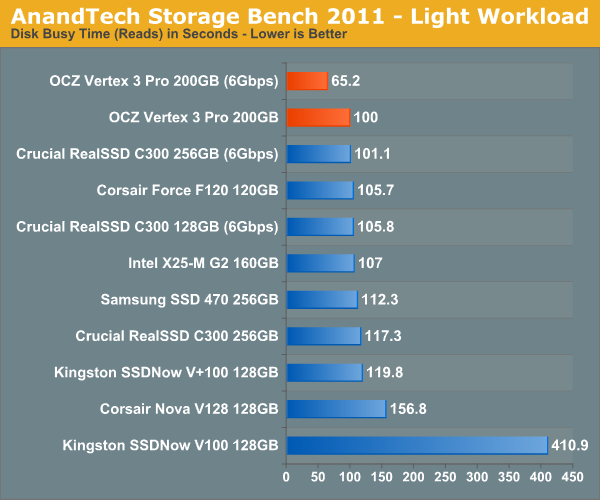











144 Comments
View All Comments
jwilliams4200 - Friday, February 18, 2011 - link
In that case, it would be helpful to print two after-TRIM benchmarks: (1) immediately after TRIM and (2) steady-state after-TRIM (i.e., TRIM, let the drive sit idle for long enough for GC to complete, then benchmark again)jcompagner - Thursday, February 17, 2011 - link
what i never understood or maybe i should read a bit more the previous articles, is that how come that a SSD can write many times faster then it can read?It seems to me that read is way easier to do then write...
vol7ron - Friday, February 18, 2011 - link
I originally thought that, but SSDs first write to the controller, which organizes the data for storing it to the disk. The major point is that the data can go anywhere in the array of NAND nodes and the list of the next available node in the stack is available almost immediately, whereas a read requires a hash lookup of where the data is stored, which means the seek could take longer to accomplish.I, as well, am not certain that's true, but that's my best guess.
AnnihilatorX - Saturday, February 19, 2011 - link
Only for Sandforce controllers.Sandforce compresses the incoming data at real time. If the incoming data is highly compressible, in a very extreme example, writting a 500MB blank text file, will be instantaneous. So you see 500MB/ms or something ridiculous.
It is also possible for write speeds to exceed read in burst when small amount of data is written to DRAM on other controllers
Soul_Master - Thursday, February 17, 2011 - link
For zero impact from source performance, I suggest to copy data from RAM drive to your test hard disk.Anand Lal Shimpi - Thursday, February 17, 2011 - link
That's a great suggestion. I ran out of time before I left the country but I'll be playing with it some more upon my return :)Take care,
Anand
MrBrownSound - Thursday, February 17, 2011 - link
I think the intel x25m was a pretty good control group to send the data from. I would auctally like to see the changes when sending the data through the RAM; that would be interesting.Hacp - Thursday, February 17, 2011 - link
Anand,You still direct your readers to your Vertex2 article but OCZ has changed its performance on those drives. Your results are no longer valid and it would be dishonest to link the old Vertex2 performance numbers in this new article when they do not reflect the new slower performance of the Vertex2 today.
Anand Lal Shimpi - Thursday, February 17, 2011 - link
I've seen the discussion and based on what I've seen it sounds like very poor decision making on OCZ's behalf. Unfortunately my 25nm drive didn't arrive before I left for MWC. I hope to have it by the time I get back next week and I'll run through the gamut of tests, updating as necessary. I also plan on speaking with OCZ about this. Let me get back to the office and I'll begin working on it :)As far as old Vertex 2 numbers go, I didn't actually use a Vertex 2 here (I don't believe any older numbers snuck in here). The Corsair Force F120 is the SF-1200 representative of choice in this test.
Take care,
Anand
Quindor - Thursday, February 17, 2011 - link
Good to hear that you are addressing the problems surrounding the Vertex 2 drives. There aren't many websites out there which deliver well thought through reviews and bechmarks such as Anandtech does, although some are getting better.I did some benchmarks on my own and with the new 25nm NAND the new 180GB OCZ Vertex2 can actually be slower then my more then a year old 120GB OCZ Vertex1.
If anyone is interested. They can find an overview of the benchmarks performed on the following page. https://picasaweb.google.com/quindor/Benchmarks#
Still, I would love to see an in depth comparsion as you are famous for. ;)
For my personal usage scenario (my own ESXi server), the speed decrease will be of minimal effect because running multiple template cloned guests, the dedup and compression should be able to do their work just fine. ;)